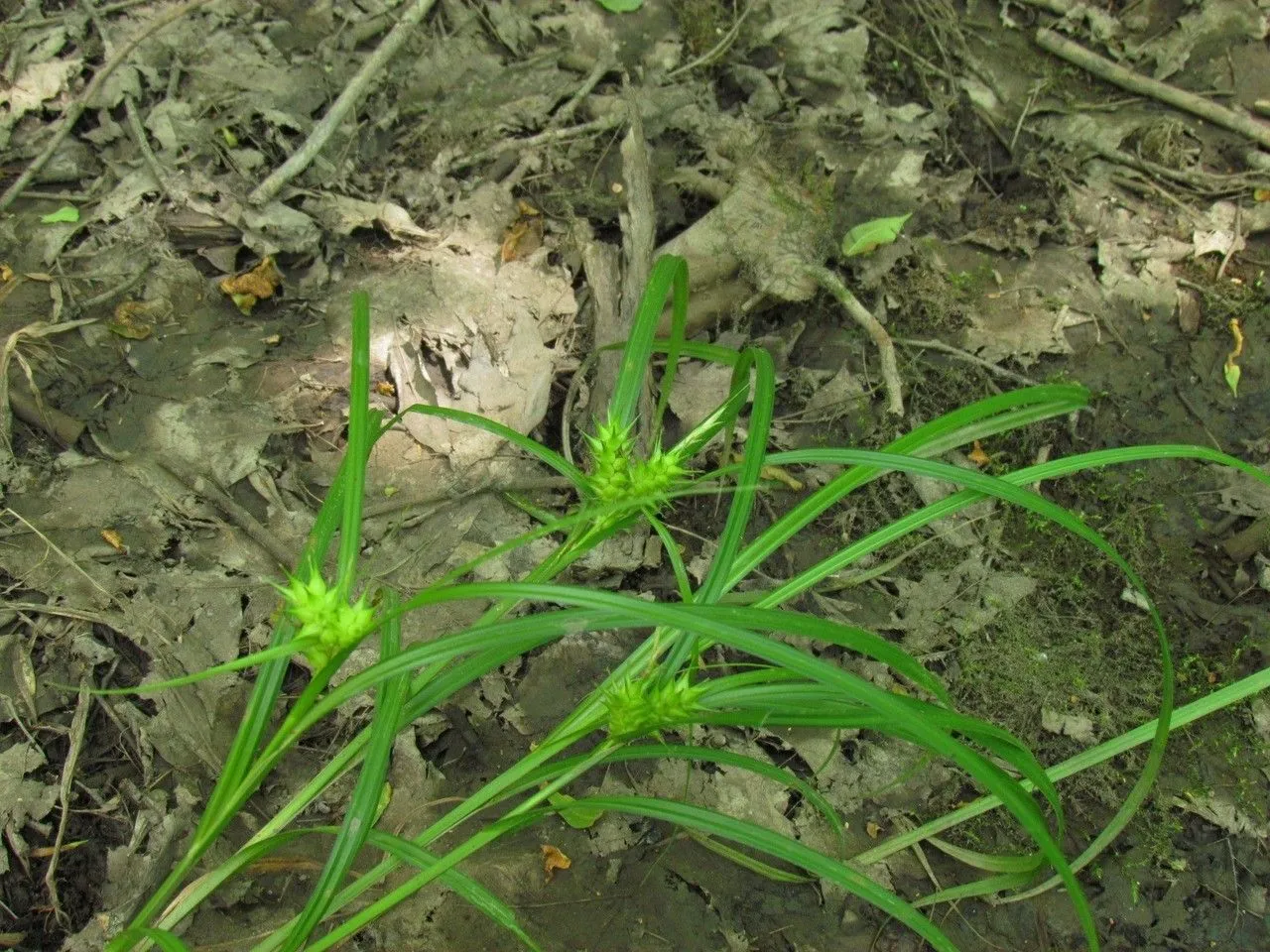
Author: Muhl. ex Willd.
Bibliography: Sp. Pl., ed. 4, 4: 266 (1805)
Year: 1805
Status: accepted
Rank: species
Genus: Carex
Vegetable: False
Observations: E. Canada to C. & E. U.S.A., NE. & NC. Mexico
Hop sedge, scientifically known as Carex lupulina, is a noteworthy species within the Cyperaceae family. Described initially in the early 19th century, this sedge was officially documented in the fourth edition of “Species Plantarum,” a monumental botanical text, by the botanist Muhl. and further elaborated by Willd. in 1805.
Native to a broad stretch of North America, hop sedge can be found ranging from Eastern Canada down through the central and eastern United States, extending into northeastern and north-central regions of Mexico. This geographical distribution underscores its adaptability to a variety of environmental conditions across a significant latitudinal gradient.
The plant is typically found in moist to wet habitats, such as marshes, swamps, and along the edges of streams and ponds. It thrives in these wetland areas, contributing to the biodiversity and ecological health of these environments. Its presence is indicative of a healthy, functioning ecosystem where water quality and soil conditions support the growth of hydrophilic plant species.
The vibrant green foliage of hop sedge, along with its distinctive conical seed heads, provides both aesthetic and functional value to the landscapes it inhabits. These seed heads often resemble hops used in brewing, which is likely the origin of its common name. Additionally, like many sedges, Carex lupulina plays a crucial role in soil stabilization and water filtration, making it an essential component of wetland conservation and restoration efforts.
In summary, Carex lupulina, or hop sedge, is a vital sedge species contributing to the ecological integrity of wetlands across its native range in North America. Its adaptability and ecological functions make it a significant species worthy of attention and study within the botany and conservation fields.
Eng: hop sedge, common hop sedge
Fra: carex houblon
En: Hop sedge, Common hop sedge
Fr: Carex houblon
Taken Apr 30, 2021 by Erika Lozano (cc-by-sa)
Taken Aug 20, 2014 by EOL − Daniel Carter (cc-by-nc)
Taken Aug 4, 2020 by Morgan Fyfe (cc-by-sa)
Taken Jul 27, 2021 by David Hinds (cc-by-sa)
Taken Jul 9, 2020 by kristen rose (cc-by-sa)
Taken Jun 18, 2019 by Matt (cc-by-sa)
Taken Jun 16, 2021 by Renée-Louise Lamontagne (cc-by-sa)
Taken Jul 10, 2021 by Renée-Louise Lamontagne (cc-by-sa)
Taken Jun 20, 2022 by Renée-Louise Lamontagne (cc-by-sa)
Taken Jun 20, 2022 by Renée-Louise Lamontagne (cc-by-sa)
Taken Aug 4, 2020 by Morgan Fyfe (cc-by-sa)
Taken Jun 23, 2022 by David Cravens (cc-by-sa)
Taken Oct 13, 2019 by morgan morgan hancock (cc-by-sa)
Taken Aug 12, 2010 by EOL − Kirchner, Natalie (cc-by-nc-sa)
Taken Jan 1, 1900 by EOL − John Hilty (cc-by-nc)
Taken Nov 16, 2015 by EOL − Jean-François Roch (cc-by-nc)
Taken Aug 10, 2015 by EOL − cathymtp (cc-by-nc)
Taken Nov 16, 2015 by EOL − Jean-François Roch (cc-by-nc)
Taken Oct 19, 2013 by EOL − Jesse Lincoln (cc-by-nc)
Taken Sep 14, 2013 by EOL − dsuarez (cc-by-nc)
Taken Jul 25, 2020 by Ken Borgfeldt (cc-by-sa)
Taken Aug 10, 2015 by EOL − cathymtp (cc-by-nc)
Growth form: Bunch
Growth habit: Graminoid
Growth rate: Moderate
Ph maximum: 7.0
Ph minimum: 6.2
Family: Myrtaceae Author: (F.Muell.) K.D.Hill & L.A.S.Johnson Bibliography: Telopea 6: 402 (1995) Year: 1995 Status:…
Family: Rubiaceae Author: Pierre ex A.Froehner Bibliography: Notizbl. Bot. Gart. Berlin-Dahlem 1: 237 (1897) Year:…
Family: Sapindaceae Author: Koidz. Bibliography: J. Coll. Sci. Imp. Univ. Tokyo 32(1): 38 (1911) Year:…
Family: Asteraceae Author: A.Gray Bibliography: Pacif. Railr. Rep.: 107 (1857) Year: 1857 Status: accepted Rank:…
Family: Fabaceae Author: Medik. Bibliography: Vorles. Churpfälz. Phys.-Ökon. Ges. 2: 398 (1787) Year: 1787 Status:…
Family: Aspleniaceae Author: (Cav.) Alston Bibliography: Bull. Misc. Inform. Kew 1932: 309 (1932) Year: 1932…